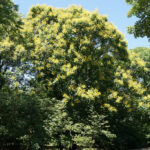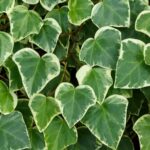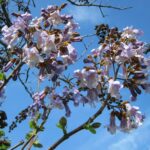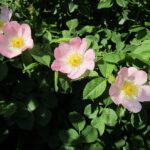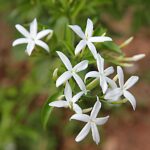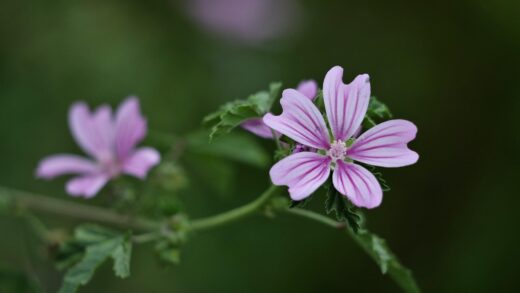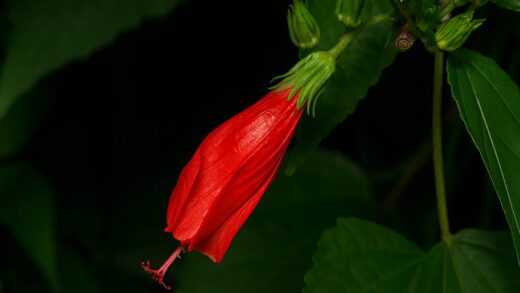Despite its reputation as a hardy and resilient plant, Algerian ivy is not entirely immune to problems and can occasionally fall victim to a range of diseases and pests. Proactive care and regular inspection are the best defenses, as early detection and intervention can prevent minor issues from escalating into serious threats to the plant’s health. Most problems are directly linked to suboptimal growing conditions, such as improper watering, poor air circulation, or inadequate light, so maintaining a healthy environment is crucial for prevention.
Fungal diseases are among the most common ailments to affect Algerian ivy, often thriving in conditions that are overly wet or humid. Issues like root rot, leaf spot, and powdery mildew can disfigure the plant’s foliage and, in severe cases, can be fatal. These diseases are typically easier to prevent than to cure, underscoring the importance of proper watering techniques and ensuring good air circulation around the plant to keep the leaves dry.
Sucking insects are the most frequent pests you will encounter, particularly on indoor-grown ivy. Pests such as spider mites, aphids, mealybugs, and scale insects feed on the plant’s sap, which weakens it, causes discoloration of the leaves, and can lead to stunted growth. These pests can multiply quickly, so it is vital to check your plant regularly, paying close attention to the undersides of leaves and the joints where leaves meet the stems, as these are common hiding spots.
This article provides a professional guide to identifying, treating, and preventing the most common diseases and pests that can affect your Algerian ivy. By familiarizing yourself with the signs and symptoms of these problems, you will be better prepared to take swift and effective action. A healthy, well-cared-for plant is always the least susceptible to attack, so the information presented here, combined with good cultivation practices, will help you keep your ivy lush, green, and problem-free.
Common fungal diseases
Root rot is arguably the most serious and deadly disease that can affect Algerian ivy, and it is almost always caused by overwatering or poorly draining soil. The fungi responsible for root rot thrive in anaerobic, waterlogged conditions, attacking and destroying the plant’s root system. Above ground, the symptoms can be misleading, often appearing as wilting, yellowing leaves, and stunted growth—signs that might be mistaken for underwatering. The key difference is that with root rot, the soil will be consistently soggy, and the base of the plant may be soft and black. Prevention is the only effective cure; always use well-draining soil and water only when the top layer of soil is dry.
More articles on this topic
Leaf spot diseases, caused by various types of fungi or bacteria, can also be a problem, especially in damp, humid conditions with poor air circulation. These diseases manifest as unsightly brown or black spots on the leaves, which may sometimes have a yellow halo around them. While typically not fatal, a severe infection can cause significant leaf drop and weaken the plant. To manage leaf spot, it is important to remove and destroy any affected leaves immediately to prevent the spores from spreading. Avoid watering the foliage from overhead and try to improve air circulation around the plant. In persistent cases, a copper-based or sulfur-based fungicide can be used.
Powdery mildew is another common fungal disease that is easy to identify. It appears as a white, powdery coating on the surface of the leaves, stems, and sometimes the flowers. It thrives in conditions of high humidity and low light and can spread quickly, hindering photosynthesis and eventually causing leaves to yellow and die. As with other fungal issues, improving air circulation is a key preventive measure. If an infection occurs, you can treat it by spraying the affected areas with a fungicide or a homemade solution of one tablespoon of baking soda and a half teaspoon of liquid soap mixed into a gallon of water.
To prevent these fungal diseases, cultural practices are paramount. Ensure your pots have excellent drainage, and never let your ivy sit in a saucer of water. When planting outdoors, space plants appropriately to allow for adequate airflow between them. Pruning to thin out overly dense growth can also improve circulation. Watering in the morning allows the foliage to dry out during the day, reducing the window of opportunity for fungal spores to germinate and infect the plant.
Identifying and treating common pests
Spider mites are one of the most common pests of indoor Algerian ivy, especially in dry, warm conditions. These tiny arachnids are difficult to see with the naked eye, but you can identify their presence by the fine, web-like material they spin on the undersides of leaves and in the crevices of the plant. They use their piercing mouthparts to suck sap from the leaves, causing a stippled or speckled appearance of tiny yellow or white dots on the foliage. To treat an infestation, you can start by forcefully spraying the plant with water to dislodge them. For more severe cases, applications of insecticidal soap or neem oil are effective.
More articles on this topic
Aphids are another common sap-sucking pest. These small, pear-shaped insects can be green, black, or yellow and typically congregate in clusters on new growth and the undersides of leaves. Their feeding can cause leaves to curl, yellow, and become distorted. Aphids also excrete a sticky substance called honeydew, which can lead to the growth of sooty mold. A strong jet of water can knock aphids off the plant, and repeated treatments with insecticidal soap or neem oil will help to control their population.
Mealybugs appear as small, white, cottony masses on the stems, leaf nodes, and undersides of leaves. Like aphids and spider mites, they feed on plant sap, which weakens the plant and can cause leaf drop and stunted growth. For small infestations, you can remove individual mealybugs by dabbing them with a cotton swab dipped in rubbing alcohol. For larger outbreaks, thorough spraying with insecticidal soap or neem oil, ensuring you get into all the nooks and crannies where they hide, will be necessary for control.
Scale insects are more stationary pests that appear as small, brown, raised bumps on the stems and leaves of the ivy. They have a hard, protective shell that makes them resistant to many contact insecticides. You can manually scrape them off with your fingernail or a soft brush. For heavier infestations, treating the plant with horticultural oil can be effective, as the oil suffocates the insects. Systemic insecticides may be necessary for very severe and persistent scale problems.
Prevention strategies
The most effective approach to managing diseases and pests is prevention. A healthy and vigorous plant is much less likely to be targeted and is better able to withstand an attack if one does occur. This starts with providing your Algerian ivy with its ideal growing conditions: bright, indirect light, well-draining soil, and proper watering. A stressed plant, whether from too much sun, too little water, or waterlogged roots, is always more susceptible to problems.
Regular inspection is a critical component of pest and disease prevention. Make it a habit to carefully examine your plants at least once a week. Look at the tops and bottoms of leaves, along the stems, and at the soil surface. Catching a problem in its earliest stages makes treatment significantly easier and more effective. It is much simpler to deal with a few aphids than a full-blown infestation that has had weeks to establish itself.
Quarantining new plants before introducing them to your existing collection is a wise practice. Keep any new plant you bring home in a separate room for at least two to four weeks. This isolation period allows you to observe the plant for any hidden pests or signs of disease that may not have been apparent at the time of purchase. This prevents the potential spread of problems to your healthy, established plants.
Maintaining good sanitation is also important. Regularly remove any dead leaves or other debris from the plant and the soil surface, as this can harbor pests and fungal spores. Keep your pruning tools clean by wiping them with rubbing alcohol between cuts, especially if you are working on a plant that you suspect may be diseased. Good hygiene reduces the chances of spreading pathogens from one plant to another.
Dealing with environmental stress
Sometimes, what appears to be a disease is actually a physiological response to environmental stress. For example, leaf scorch, which manifests as brown, dry patches on the leaves, is not a disease but a burn caused by exposure to excessive direct sunlight. The solution is not a fungicide, but rather moving the plant to a location with more appropriate, filtered light. Understanding the plant’s cultural needs helps in correctly diagnosing such problems.
Oedema is another physiological condition that can occur when the plant takes up water faster than it can transpire it, often due to a combination of waterlogged soil and high humidity. This pressure buildup causes cells on the undersides of the leaves to burst, forming small, blister-like bumps that can later turn brown and corky. While it looks like a disease, oedema is a sign of improper watering and can be corrected by reducing watering frequency and improving air circulation.
Nutrient deficiencies or toxicities can also produce symptoms that mimic diseases. Yellowing leaves, as discussed previously, can be a sign of a lack of nitrogen or a symptom of overwatering. Brown leaf tips can indicate dry air, underwatering, or an excess of fertilizer salts in the soil. Careful consideration of all the environmental factors is necessary to make an accurate diagnosis and apply the correct remedy for the problem at hand.
In essence, a holistic approach is the best way to keep your Algerian ivy healthy. Rather than just reacting to symptoms, focus on creating a stable and optimal growing environment. By providing the right light, water, and nutrients, you build a strong foundation of health that makes the plant inherently more resistant to the pests and diseases it may encounter, ensuring its beauty for years to come.
Organic and chemical treatment options
When prevention fails and treatment becomes necessary, you have a choice between organic and chemical control methods. For most common houseplant pests, organic options are often sufficient and are safer for use in the home environment. Insecticidal soaps work by disrupting the outer cell membranes of soft-bodied insects like aphids, mealybugs, and spider mites. They are contact sprays, meaning they must directly coat the pest to be effective, and they have no residual effect.
Neem oil is another popular and effective organic option. It is derived from the seeds of the neem tree and works in multiple ways: it acts as a repellent, an anti-feedant, and a growth regulator that disrupts the pest’s life cycle. It is also effective against fungal diseases like powdery mildew. When using neem oil or insecticidal soap, it is important to spray the plant thoroughly, covering all surfaces, including the undersides of the leaves, and to repeat the application every 7-10 days until the pest problem is resolved.
Horticultural oils, which can be petroleum-based or plant-based, are used to smother overwintering insects and their eggs, making them useful for controlling scale insects. Rubbing alcohol is a simple and effective spot treatment for pests like mealybugs. For fungal diseases, organic fungicides based on copper, sulfur, or potassium bicarbonate are available and can be effective if applied at the first sign of disease.
In cases of severe or persistent infestations that do not respond to organic treatments, chemical pesticides may be considered, particularly for outdoor plants. However, these should be used as a last resort. Always choose a product that is specifically labeled for the pest you are targeting and for use on your type of plant. Follow the label instructions precisely regarding application rates and safety precautions, such as wearing protective clothing and avoiding spray drift.







